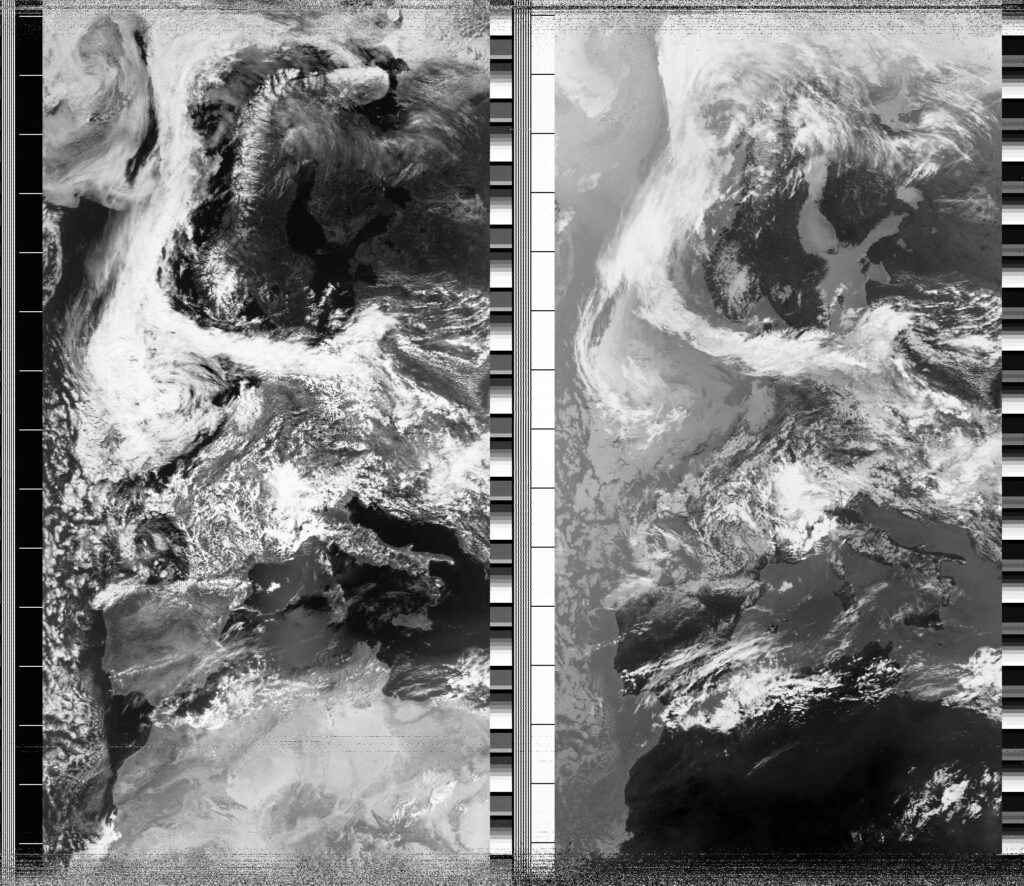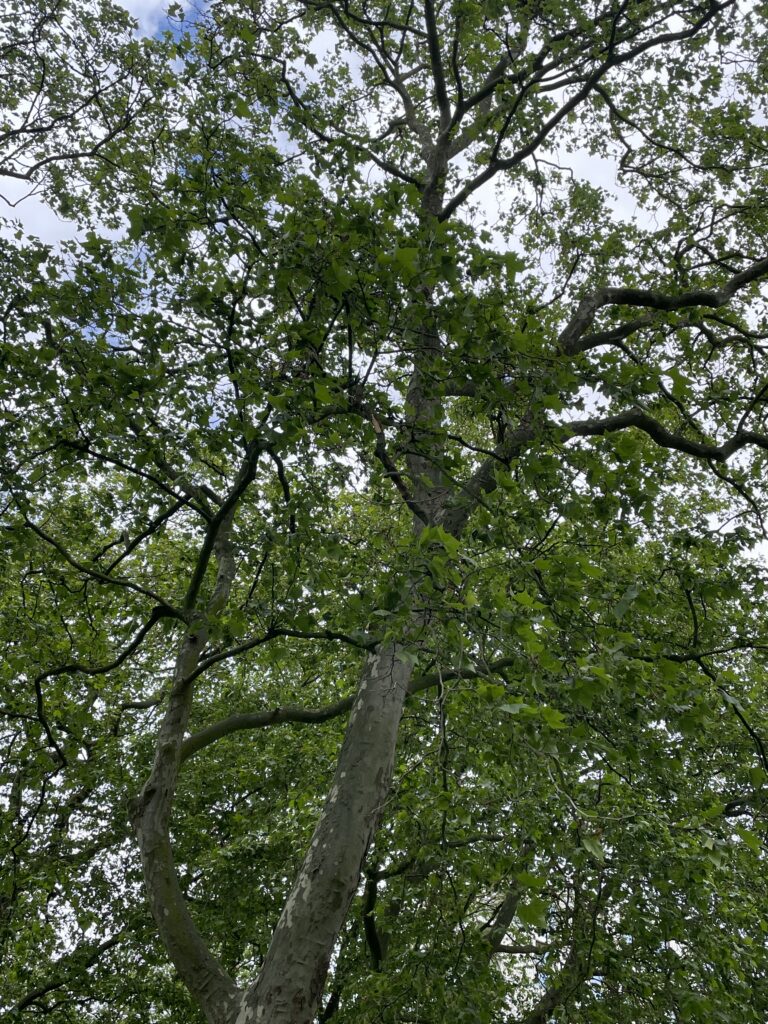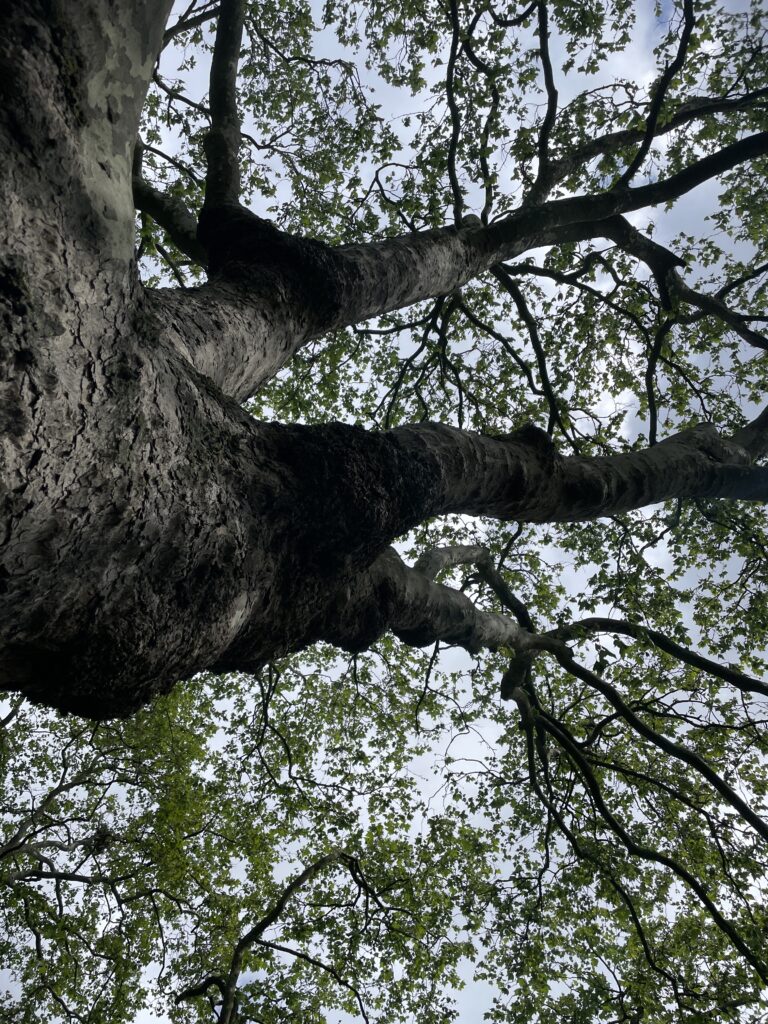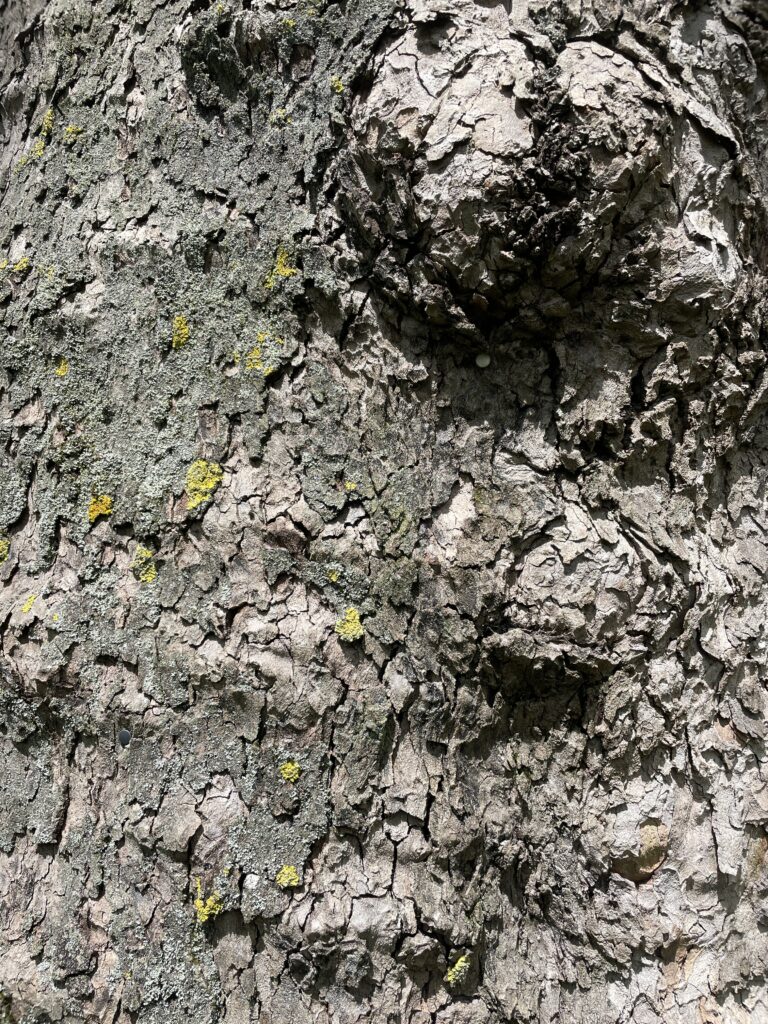Local Date
23 May 2024Local Time
11:45Location
Hackney Downs, LondonCountry or Territory
United KingdomContributor
Sasha EngelmannSatellite
NOAA-18Radio Callsign
Archive ID
Coordinates
As I knelt in the cut grass watching an image from NOAA-18 form, I noticed a tall man drawing a yellow tape around the gnarly plane trees nearby. After measuring the circumference he started to circle the trees from below and make notes on a pad. When I was done with the satellite pass I went over to speak to him, and learned that his name was Nathan, and he was surveying the plane trees for health on behalf of the local council. He told me about Massaria disease, believed to be caused by the fungus Splanchnonema platani, which used to be known as Massaria platani until scientists discovered features that required a species name-change. Massaria disease has been found in several parts of the UK in the 21st century, but it is believed to originate in the Mediterranean region. Yet spores were even detected in the air by a survey ship stationed over the mid Atlantic oceanic ridge between the Carribbean and Africa. The distance was somehow fresh in my mind as I had just captured a long satellite pass that included a long stretch of the Atlantic. The fungus has a reddish colour and causes bark to peel off branches, and eventually branches die back. Massaria specifically affects plane trees, but because plane trees are so crucial to the health of London - their leave collect and absorb air pollution, they provide large amounts of shade, and they are resistant to other urban conditions including heat - the Massaria has implicitations for the exposures and vulnerabilities of London's human communities. Nathan suspects most plane trees already have the disease, but it is when they become stressed that they manifest symptoms and health issues. The plane tree in front of us was probably 200 years old, had a diameter of 160 cm, and was doing reasonably well despite its 'pruning scars' and one low-hanging branch that showed signs of Massaria. Nathan asked me in return about my antenna and what I had been measuring. There was something poignant in our encounter - a tree health specialist carrying a diameter tape and notepad, and me with a handheld antenna and laptop - reflecting on air-travelling spores, urban trees and climate.



